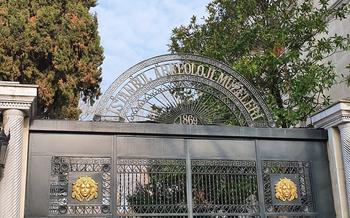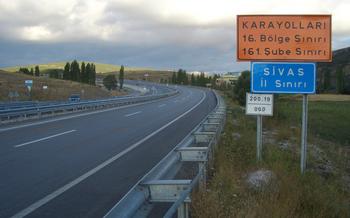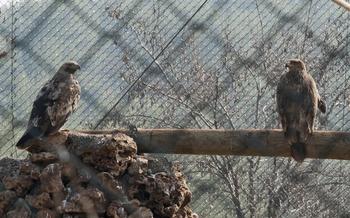
Aslantepe Ruins
- Unveiling Aslantepe: Discover the Enigmatic Ruins of Malatya
- A Journey Through Time: Exploring the Layers of Aslantepe's History
- Uncovering the Secrets of the Royal Palace
- Marveling at the Majestic Fortifications
- Discovering the Sacred Spaces of Aslantepe
- Delving into the Aslantepe Museum
- Unveiling the Secrets of the Hieroglyphic Inscriptions
- Experiencing the Local Culture of Malatya
- Exploring the Surrounding Area of Aslantepe
- Planning Your Visit to Aslantepe
- Respecting the Cultural Heritage of Aslantepe
- Capturing the Essence of Aslantepe Through Photography
- Sharing Your Aslantepe Experience
- Insider Tip: Uncovering Hidden Gems
Unveiling Aslantepe: Discover the Enigmatic Ruins of Malatya
Nestled in the heart of Turkey's Anatolian region, the ancient city of Aslantepe stands as a testament to the rich history and cultural tapestry of Malatya. With its origins dating back to the Neolithic period, Aslantepe evolved into a prominent city-state, playing a significant role in trade and cultural exchange throughout the Bronze and Iron Ages. The site's strategic location at the crossroads of major trade routes made it a melting pot of influences, with Hittite, Assyrian, and Phrygian elements blending together to create a unique and vibrant culture.
Aslantepe's archaeological wonders are a sight to behold, showcasing the impressive remains of fortifications, temples, and monumental structures. The city walls, with their towering gates and bastions, speak of the city's defensive prowess, while the royal palace, with its grand throne room and administrative center, offers a glimpse into the power and opulence of Aslantepe's rulers. The sacred spaces, including the main temple complex and smaller shrines, reveal the city's diverse religious beliefs and practices.
To truly delve into the mysteries of Aslantepe, a visit to the on-site museum is a must. Here, visitors can explore a treasure trove of artifacts excavated from the site, gaining insights into the daily lives and artistic traditions of Aslantepe's inhabitants. From intricate ceramics and pottery to exquisite metalwork and jewelry, the museum's collection provides a comprehensive overview of the city's rich cultural heritage.
Practical information:
- Visiting hours: The Aslantepe ruins and museum are open to the public daily from 8:00 am to 5:00 pm, except on Mondays.
- Entrance fees: Admission to the site and museum is free of charge.
- Accessibility: The site is wheelchair accessible, with ramps and designated pathways for visitors with disabilities.
- Guided tours: Guided tours in various languages can be arranged upon request, providing visitors with in-depth insights into Aslantepe's history and significance.
A Journey Through Time: Exploring the Layers of Aslantepe's History
Aslantepe's history is a captivating tapestry woven over millennia, showcasing the site's enduring significance. The earliest threads of this tapestry date back to the Neolithic period, around 7000 BC, when the first settlements emerged, laying the foundation for the city-state's rise.
In the Bronze Age, Aslantepe blossomed into a prominent city-state, playing a pivotal role in trade and cultural exchange. Its strategic location along trade routes facilitated interactions with neighboring civilizations, leading to a rich blend of influences that shaped the city's culture and art.
The Iron Age brought about transformations as Aslantepe came under the sway of successive empires, including the Hittites, Assyrians, and Phrygians. Each of these empires left its mark on the city, influencing its architecture, religious practices, and political structures. Aslantepe's resilience and adaptability allowed it to navigate these changes, maintaining its status as a significant urban center.
Practical information:
-
Guided tours: Enhance your exploration with a guided tour led by knowledgeable experts who can provide insights into the site's history, culture, and significance.
-
Maps and routes: Obtain maps and recommended routes from the visitor center to help you navigate the site effectively and make the most of your time.
-
Accessibility: Aslantepe is generally accessible, with designated pathways and ramps for visitors with disabilities. However, some areas may require assistance or may not be fully accessible due to the site's historical nature.
Uncovering the Secrets of the Royal Palace
At the heart of Aslantepe's ancient city, the royal palace stands as a testament to the power and grandeur of its rulers. This impressive structure, with its sheer size and intricate design, offers a glimpse into the daily lives of Aslantepe's elite and the functioning of the palace. Explore the throne room, the administrative center of the city, where important decisions were made and justice was dispensed. Wander through the royal apartments, where the rulers and their families resided, and imagine the lavish feasts and celebrations that took place within these walls. Discover the storerooms, filled with treasures and provisions, providing a glimpse into the palace's vast resources and wealth. As you explore the royal palace, let your imagination transport you back in time to an era of power, intrigue, and opulence.
Practical information:
- The royal palace is located in the central part of the site, near the main temple complex.
- It is accessible to visitors during regular opening hours, and guided tours are available upon request.
- The palace features several well-preserved rooms, including the throne room, royal apartments, and storerooms, offering a unique insight into the lives of Aslantepe's rulers.
Marveling at the Majestic Fortifications
The fortifications of Aslantepe stand as a testament to the city's strategic importance and defensive prowess. Constructed with remarkable precision and engineering skill, the city walls and gates served as an impenetrable barrier against invaders. Explore the different types of fortifications, including towers, bastions, and gateways, each playing a crucial role in protecting Aslantepe.
Defensive Prowess:
Aslantepe's strategic location atop a hill provided a natural advantage for defense. The city walls, constructed using massive stone blocks, formed an imposing barrier, reaching heights of up to 12 meters. The walls were further reinforced with towers and bastions, positioned at regular intervals to provide a clear line of sight and enable effective communication during attacks.
Towers and Bastions:
The towers and bastions of Aslantepe served as observation posts, providing a panoramic view of the surrounding landscape. These structures allowed defenders to spot approaching enemies from afar and relay warnings to the city. The bastions, with their projecting angles, offered additional protection against attackers by creating blind spots and deflecting projectiles.
Gateways and Passages:
The main entrances to Aslantepe were heavily fortified, featuring massive gates and intricate passageways. These gateways were designed to slow down and funnel attackers, making it difficult for them to breach the city's defenses. The gateways were also equipped with guard towers, allowing defenders to keep a watchful eye on those entering and leaving the city.
Practical Information:
- The fortifications are accessible to visitors throughout the day, offering stunning views of the surrounding landscape.
- Climb to the top of the towers for a bird's-eye view of the site and the surrounding countryside.
- Capture the impressive scale and grandeur of the fortifications in your photographs.
Discovering the Sacred Spaces of Aslantepe
Main temple complex: The most prominent religious structure at Aslantepe is the main temple complex, dedicated to the city's patron deity. Its imposing size and grand architecture reflect the religious significance of the site. The temple features an impressive entrance, leading to a spacious courtyard surrounded by colonnades. Within the courtyard, visitors can admire the remains of an altar and a sacred pool, where religious ceremonies and rituals were performed.
Smaller temples and shrines: Beyond the main temple complex, Aslantepe boasts a number of smaller temples and shrines dedicated to various deities. These structures, though smaller in size, offer a glimpse into the diverse religious beliefs and practices that existed in ancient Aslantepe. Visitors can explore these smaller sanctuaries, each with its own unique design and atmosphere, to gain a deeper understanding of the city's spiritual life.
Ritual practices and offerings: Aslantepe's temples were not merely places of worship but also centers of religious rituals and ceremonies. Visitors can learn about the various rituals performed at the temples, such as offerings to the gods, animal sacrifices, and processions. Evidence of these rituals can be found in the form of votive objects, such as figurines, pottery vessels, and jewelry, which were left as offerings to the deities.
Delving into the Aslantepe Museum
The Aslantepe Museum stands as a testament to the rich history and cultural heritage of the ancient city. Within its walls, a treasure trove of artifacts excavated from the site awaits visitors, providing a comprehensive overview of Aslantepe's past.
The museum's collection encompasses a diverse range of artifacts, including ceramics and pottery that showcase the everyday lives and artistic traditions of the city's inhabitants. Exquisite metalwork and jewelry pieces further attest to the skill and craftsmanship of Aslantepe's artisans.
Beyond these tangible remains, the museum also houses a collection of hieroglyphic inscriptions, shedding light on the written language and cultural beliefs of the ancient people. Bilingual inscriptions, in particular, have played a crucial role in deciphering the Luwian language and unlocking the secrets of Aslantepe's history.
A visit to the Aslantepe Museum is an essential complement to exploring the ruins themselves. It offers a deeper understanding of the city's cultural and historical significance, bringing the ancient world to life through its captivating displays.
Practical Information:
- Location: The Aslantepe Museum is situated near the entrance to the archaeological site, making it easily accessible for visitors.
- Admission Fees: A small entrance fee is required to enter the museum.
- Guided Tours: Guided tours or audio guides are available to enhance your museum experience, providing insights into the artifacts and the history of Aslantepe.
Unveiling the Secrets of the Hieroglyphic Inscriptions
The discovery of hieroglyphic inscriptions at Aslantepe has shed new light on the history and culture of this ancient city. These inscriptions, written in the Luwian language, provide valuable insights into the political, social, and religious life of Aslantepe. Bilingual inscriptions, written in both Luwian and Hittite, have been particularly significant in deciphering the Luwian language and understanding the cultural interactions between these two civilizations.
The inscriptions reveal the names of Aslantepe's rulers, their military campaigns, and their diplomatic relations with neighboring kingdoms. They also provide information about the city's religious beliefs and practices, including the names of deities and the rituals performed in their honor.
Ongoing research on the hieroglyphic inscriptions is helping to piece together the history of Aslantepe and its place in the broader context of the ancient Near East. Visitors to the site can see some of the inscriptions in situ, while others are displayed in the Aslantepe Museum. Translations and explanations are provided to help visitors understand the significance of these ancient texts.
Experiencing the Local Culture of Malatya
Immerse yourself in the vibrant culture of Malatya by savoring its delectable cuisine, exploring its unique handicrafts, and participating in local festivals. Indulge in culinary delights like kayısı dolması (stuffed apricots) and Malatya peynir (local cheese), tantalizing your palate with the region's distinct flavors. Discover the exquisite craftsmanship of Malatya's artisans, expressed in intricate copperware, pottery, and textiles, making for memorable souvenirs. To truly embrace the local spirit, join in the festivities of local festivals and events, immersing yourself in the vibrant music, dance, and traditions that define Malatya's cultural heritage.
Practical Information:
- Cuisine: For authentic culinary experiences, visit local restaurants that serve traditional Malatya dishes. Ask for recommendations from your hotel or tour guide.
- Handicrafts: Discover unique handicrafts at local markets or specialty shops. Haggling is acceptable, and it's a great way to interact with the locals.
- Festivals: Check the local tourism office or online resources for information on upcoming festivals and events. Plan your visit accordingly to coincide with these vibrant celebrations.
Exploring the Surrounding Area of Aslantepe
Beyond the captivating ruins of Aslantepe, the surrounding region offers an array of natural wonders and historical sites that beckon exploration. Immerse yourself in the scenic landscapes of the Battalgazi Canyon, where towering rock formations and lush vegetation create a breathtaking panorama. Follow the meandering Karasu River, a tranquil oasis that invites you to unwind amidst its serene beauty.
Uncover the secrets of ancient civilizations at the nearby historical sites. Journey to Arslantepe, an archaeological marvel that boasts impressive fortifications and a rich history that rivals that of its namesake. Ascend the majestic Malatya Castle, a testament to the region's strategic importance throughout the ages. Its imposing walls and panoramic views offer a glimpse into the past and present of this captivating region.
Embrace the spirit of adventure with outdoor activities that cater to every taste. Lace up your hiking boots and embark on invigorating trails that wind through picturesque valleys and offer breathtaking vistas. Cycle along scenic routes that traverse charming villages and reveal hidden gems. Cast your line into the crystal-clear waters of the Karasu River and experience the thrill of reeling in a prized catch.
Practical Information:
- Transportation: Rent a car or utilize local transportation options to explore the surrounding area at your own pace.
- Recommended Routes: Plan your itinerary based on your interests, whether it's exploring natural wonders, historical sites, or outdoor activities.
- Permits and Precautions: Obtain any necessary permits or permissions for activities such as fishing or hiking in protected areas. Be prepared for varying weather conditions and pack accordingly.
Planning Your Visit to Aslantepe
Best time to visit:
Considering the climate and weather conditions, the best time to visit Aslantepe is during the spring or fall months. The weather is generally pleasant during these seasons, with warm and sunny days and cool nights. Summer months can be hot and dry, while winters can be cold and snowy, making it less ideal for exploring the site.
Duration of visit:
Allocate sufficient time to explore the site, including the museum, and appreciate its significance. A minimum of three to four hours is recommended to fully experience the ruins and the museum. If you have a particular interest in archaeology or history, you may want to allocate more time to delve deeper into the site's intricacies.
Accessibility:
Ensure that the site is accessible for visitors with disabilities or special needs. The main paths and areas of the site are generally accessible, but some areas may require assistance or may not be suitable for wheelchairs or strollers. It is advisable to contact the site's administration or a local tour operator in advance to inquire about specific accessibility needs.
Practical information:
Tips for planning your itinerary:
- Research and identify the specific areas or features of Aslantepe that you are most interested in visiting.
- Plan your visit during the early morning or late afternoon to avoid the midday heat, especially during the summer months.
- Wear comfortable shoes as you will be doing a significant amount of walking on uneven surfaces.
- Bring water, sunscreen, and a hat to protect yourself from the sun.
- Consider hiring a local guide or joining a guided tour to gain deeper insights into the site's history and significance.
- Check the website or contact the local tourism office for information on current exhibitions, events, or any special programs or activities at the site.
Respecting the Cultural Heritage of Aslantepe
Aslantepe stands as a testament to the rich cultural heritage of Turkey and the ancient civilizations that once thrived in Anatolia. It is crucial for visitors to respect and preserve this heritage for future generations. Responsible tourism practices are essential, such as avoiding touching or damaging the ruins, and respecting local customs and traditions. It is important to remember that these ruins are not just historical relics but symbols of the cultural identity of the region.
Visitors should be mindful of the ethical implications of visiting archaeological sites. Supporting local communities and businesses is vital to ensure that the benefits of tourism are shared equitably. Visitors can contribute to the preservation of Aslantepe by adhering to guidelines for proper conduct, photography restrictions, and any conservation efforts underway. By respecting the cultural heritage of Aslantepe, visitors can help protect this invaluable site for years to come.
Capturing the Essence of Aslantepe Through Photography
The ruins of Aslantepe present a treasure trove of photographic opportunities for visitors. The site's sprawling fortifications, majestic temples, and intricate stone reliefs offer a variety of subjects to capture. For the best results, plan your visit during the golden hours of sunrise or sunset when the soft light casts a warm glow on the ancient stones. Experiment with different angles and perspectives to create visually compelling compositions. Utilize a tripod to stabilize your camera and capture sharp images, especially in low-light conditions. Consider using filters to enhance the colors and contrast of your shots. Whether you're an amateur photographer or a seasoned pro, Aslantepe offers endless possibilities for capturing stunning images that will transport viewers back in time.
Sharing Your Aslantepe Experience
Documenting and sharing your experiences at Aslantepe is a fantastic way to inspire others to visit this hidden gem and contribute to its preservation. Social media platforms like Instagram and Facebook are excellent tools for showcasing the site's beauty and uniqueness. Share your stunning photographs, accompanied by captivating captions that provide historical context and personal anecdotes. Use relevant hashtags such as #Aslantepe, #Malatya, and #Turkey to increase the visibility of your posts and connect with like-minded travelers. Consider starting a travel blog or contributing to travel forums to share your in-depth insights and recommendations. Detailed blog posts allow you to delve deeper into the history, culture, and significance of Aslantepe, providing valuable information for future visitors. By sharing your experiences, you become an ambassador for this remarkable site, encouraging others to embark on their own journey of discovery.
Insider Tip: Uncovering Hidden Gems
Beyond the main attractions of Aslantepe, there are hidden gems waiting to be discovered by curious travelers. Venture off the beaten path to uncover lesser-known areas within the site that offer unique perspectives and secluded spots. Engage the services of local guides who possess a wealth of insider knowledge and can lead you to these hidden treasures. They can unveil the secrets of the site, such as concealed chambers, panoramic viewpoints, and enigmatic inscriptions that are often overlooked by casual visitors.
Explore the surrounding villages nestled amidst the picturesque landscapes to immerse yourself in the authentic culture of the region. Interact with the friendly locals, learn about their traditions, and discover hidden cultural treasures that may not be readily apparent to tourists. Embrace the opportunity to savor local delicacies, witness traditional crafts, and participate in local festivals, gaining a deeper understanding of the region's rich heritage.









